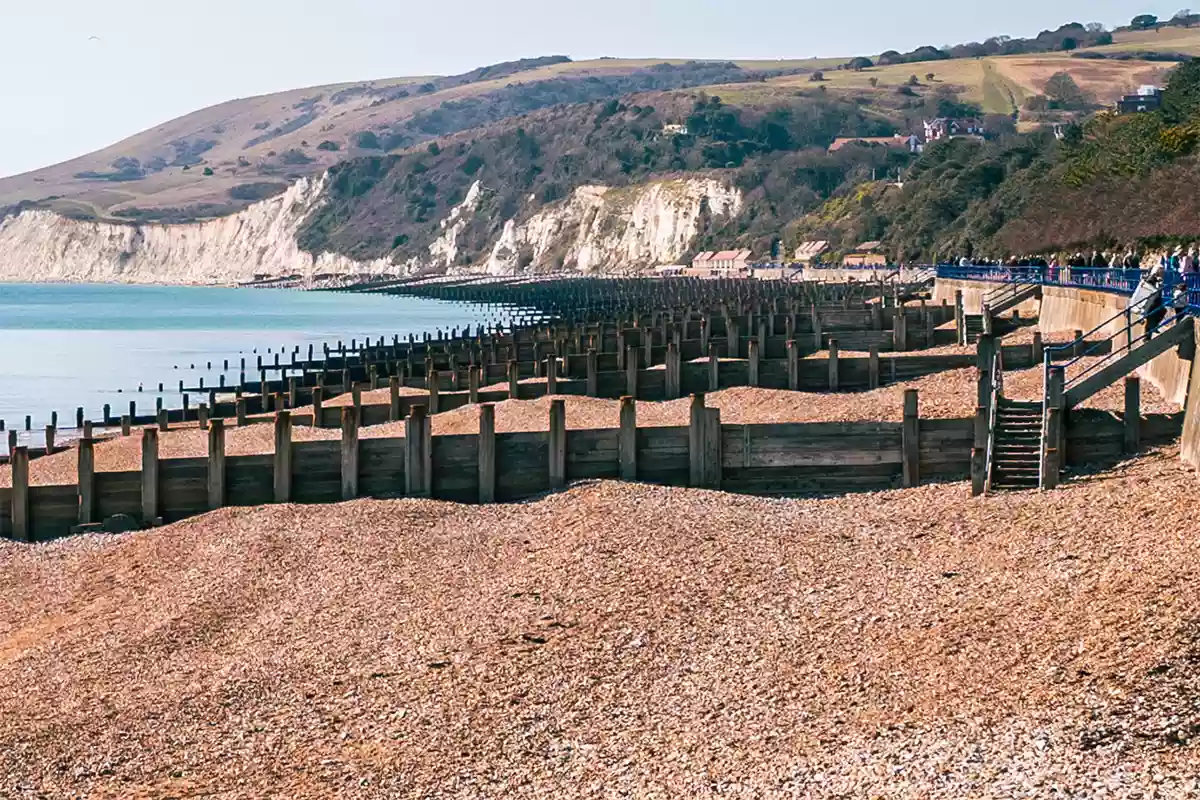- Call us: 01444 237070
- Contact Us
- Stores
- Sign In / Register
-
- Back
- Used Cameras
- Used Accessories
- Used Lenses
- Used Video
- Used Film Equipment
- Used Stock Alert
- Used Blank Test
- Sell or Part Exchange
- Used Clearance
- Recently Added Used Equipment
- Park Picks
- All Used Black Friday Deals
- Faulty
- Trade-In
- Blog
- New in
- Call us
- Contact us
- Stores
- Sign in
- Categories
- Tips & Inspiration
- Reviews
- News
- Events
- Features
- Buying Guides
- Competitions
Sony Scores Hat-Trick With 3 New Lenses
Sony has released a series of three new ultra compact full frame prime lenses, the FE 24mm f/2.8 G Lens, FE 40mm f/2.5 G and FE 50mm f/2.5 G. This review compares all three with full specs table, sample images, video review and why they are a hat-trick for Sony.
Some background on recent lens releases from Sony
Just recently Sony released the FE 50mm f/1.2 GM Lens, a significant optic thanks to the fastest aperture available for E-mount users at a standard focal width. Just a few days later the release of these three new primes also includes a 50mm lens, what’s that all about?
The simple answer is these lenses are for different users and purposes. An f/1.2 lens is designed to show off Sony’s optical manufacturing skills, providing advanced enthusiasts and professional users with the very pinnacle of lens technology available. That comes at a price, both in terms of financial outlay but also a heavy weight penalty. Read more on that below.

Sample 1 - FE 24mm f/2.8 G Lens Mounted on Sony A7C. Exposure: 1/320. f/8 ISO 125
With that f/1.2 release under their belts Sony redirected its’ attention to the rest of us, photographers and videographers who yearn for a bright aperture to make beautiful images with great subject separation, high quality results, and also want lighter, more compact and affordable options. That is what the three new lenses provide; suitably impressive apertures along with decent build-quality in ultra compact metal cases that render superb results. This is starting to sound very compelling.

Sample 1 - 100% crop
What are these three lenses good for?
As photography develops, more and more users are creating a combination of stills images and videos in various situations. Some previous lenses have louder focus motors or audible clicking apertures, which does not lend itself to video capture. Camera companies have noticed this trend and have started to develop new lenses which suppress noise, making them suitable for stills and video in any situation. With the latest camera bodies able to shoot in complete silence (looking at you Alpha 1), surely users will choose a silent lens to accompany the camera? We think so and so does Sony it seems.

Sample 2 - FE 40mm f/2.5 G Lens Mounted on Sony A7 III. Exposure: 1/200. f/4 ISO 125
How lightweight is lightweight?
Quiet operation isn’t the only benefit by a long shot, that’s just one goal Sony scored. Ultra compact size and low weight is another. The aforementioned 50mm f/1.2 weighs more on its’ own than all three new models combined at 778g vs 509g for all three. It’s a fact of science that the higher quality optics companies pack into a lens, the heavier it becomes. Quite simply more glass = better optical quality. With these new models Sony is bending these rules, applying eight or nine elements into various groups with ‘special lenses’ mixed in. The results are suitably impressive delivering well controlled, sharp, high resolution detail visible throughout the frame. We’ve included full crop on some of these sample images to demonstrate the level of detail captured so you can see for yourself.

Aspherical elements correct spherical aberrations and increase sharpness, whilst colour fringing and chromatic aberrations are reduced by ED glass. These types of special glass are more expensive to manufacturer so it is a pleasure to see the prices of these three lenses as well controlled as the results they can achieve.
How about Autofocus speed?
All three models contain two linear focus motors. At their compact size this may seem like overkill but Sony has developed these to be as quick focusing as possible. All newer Sony cameras incorporate state of the art Phase-Detect AF system. This excels at Eye / Face and slowly but surely Animal Eye detection, which demand fast focus lenses. Tracking subjects also relies on quick motors and these three lenses are adept at first achieving focus, then tracking without missing a beat. Regardless of whether shooting stills or movies this kind of feature is a real world bonus, particularly when combined with a refined AF system. Goal number two scored in the back of the net!

Sample 3 - FE 50mm f/2.5 G Lens Mounted on Sony A7C. Exposure: 1/320. f/4 ISO 1600
Why use the same lens dimensions, weight and thread sizes?
Prime lenses are notoriously good at delivering high quality results when compared to zoom lenses, but they are also challenging as we need more of them to cover the same focal range that one zoom can cover. When a manufacture designs a series of lenses with similar sizes, weights and thread sizes they are suggesting they go well together, with quick lens changes made easy. This provides high quality results without spending lots of energy and time on accessories. Having cross compatible filters saves money and three similar sizes lends itself to a streamlined workflow, which is particularly useful for recording videos.

Sample 3 - 100% crop
Which subjects do these lenses cover?
Each of these new lenses serves a slightly different purpose and subject with some crossover, however when combined they span a wide-angle 24mm to standard 50mm, which is a very versatile range. Speaking of subjects which these cover, it is just about anything aside from telephoto subjects which might include sports and wildlife. Nuances in focal width can be rewarding when we really push ourselves creatively, with the wide-angle also offering the opportunity to shoot night skies, astro and star photography. The FE 24mm f/2.8 G Lens also excels at architectural photography, interiors and cityscapes along with selfie-style pictures and video-to-camera for vlogging on a full frame camera. Documentary photographers, family photographers and similar shooters will also lean towards wider lenses with the opportunity to capture their subject’s surroundings in the frame.

The FE 40mm f/2.5 G Lens is an interesting focal width with Sony already having 35mm options such as the FE 35mm f/1.8 and ZEISS FE 35mm f/2.8 ZA. With the new model they elected to make a slightly longer standard lens. This is still wider than the human eye sees, providing a good width for compelling portraits, still life, travel and street photography.
Subjects suitable for the FE 50mm f/2.5 G Lens are equally diverse, from a general purpose all-day lens to more specialised portraits, travel and fine art or still life. All three are super sharp, but the 50mm results are perhaps most intriguing as it is such a defined focal length with pin sharp centre details. This is apparent even when used on ultra high resolution cameras like the A7R IV with over 60 megapixels.
Owners of any of these lenses will appreciate the full frame results, despite the lightweight and compact size. This suggests cameras which are a good fit include the similarly compact A7C although these lenses will work perfectly even on pro Sony Cinema Line cameras, including the newer Sony FX3. As an affordable and versatile option, any of these is hard to beat.

Build-quality and durability
With subjects covering both indoor and outdoor shooting Sony has made these three lenses as durable as possible, whilst keeping prices down. All are made with aluminium outer casings and lens hoods, which is a very nice touch. They also feature engraved markings, rather than being printed, which includes the aperture indices and focal length marks. Even Sony’s logo is etched into the metal hood rather than being printed on. The mount has a rubber seal which will help with showers or somewhat wet weather. The size and weight of each hides the fact these are all round well built, durable and quite a sophisticated looking series of lenses.
Other features include the aperture ring, a focus hold switch on the barrel as well as manual focus switch and smooth rubber focus ring. Each model feels good in the hand with easy to use ergonomics which will be familiar to any Sony shooter. With these making 43 full frame lenses in Sony’s range, it is no surprise they have scored a hat-trick with this latest release.

Table comparison of the three new Sony prime lenses
|
|
|||
|
Lens construction (groups/elements) |
7/8 |
9/9 |
9/9 |
|
Special elements |
3 aspherical elements and one ED |
3 aspherical elements |
3 aspherical elements and one ED |
|
Angle of view (35mm) |
84º |
57º |
47º |
|
Maximum aperture |
f/2.8 |
f/2.5 |
f/2.5 |
|
Minimum aperture |
f/22 |
f/22 |
f/22 |
|
Number of aperture blade |
7 |
7 |
7 |
|
Minimum focus distance (m) |
0.24m (AF) 0.18m (MF) |
0.28m (AF) 0.25m (MF) |
0.35m (AF) 0.31m (MF) |
|
Filter diameter |
49mm |
49mm |
49mm |
|
Dimensions dia. x length |
68 x 45mm |
68 x 45mm |
68 x 45mm |
|
Weight approx. |
162g |
173g |
174g |
Video Review of 3 New Sony Lenses
Our own video pro Gareth Evans was sent these directly from Sony, so why not grab a cuppa and watch his video review here.
Image samples
The image samples from these three lenses have been captured by our own reviewer Gareth with 100% crop examples showing the detail achievable with any one lens. We also added a couple of very nice samples from Sony, although these don’t contain any meta data.
Share this post:
By Nick Dautlich on 23/03/2021
Nick Dautlich
Senior Content Writer and Product Reviewer
Nick Dautlich is the Senior Content Writer and Product Reviewer at Park Cameras, with over 15 years of photography experience. A Sony Imaging Professional and expert reviewer, Nick has worked with major brands such as Canon, Sony and Nikon. His work is also featured on Vanguard World UK’s website, Capture Landscapes, and Shutter Evolve. Nick’s photography includes National Trust projects and magazine covers and he is passionate about landscapes and storytelling. Nick also enjoys hiking and teaching his children about nature. Learn more on his profile page.

Trade in your old equipment
Fast and easy trade in service ensures your old gear is collected efficiently and you are paid quickly! It's very simple to trade in your unwanted photography gear. Just head over to our dedicated Sell or Part Exchange page, fill out the details, and we'll get back to you with an offer for your old gear. Take the cash, or put it towards the cost of your new gear. It's up to you! Find out more
sign up to the newsletter
Keep up to date on the latest photography news, events and offers. Sign up now
